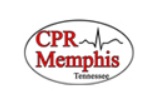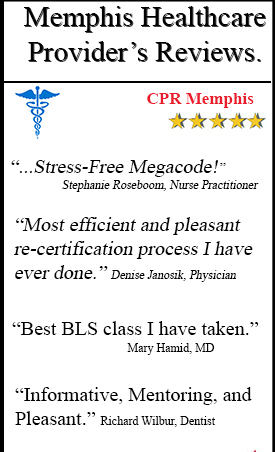9 Things you must Know About Testicular Cancer By Jessica Chandler
Call Us Now
Get the Best CPR Class in Memphis Today!
Testicular Cancer is a very serious disease causing the cells in one or both testicles to become malignant. There are many things to know about detection, symptoms, treatments, and survival of testicular cancer. 9 of the main things to know about this disease are listed in this paper.
1.) White men are far more likely to develop testicular cancer than any other race and the reason for that is still unknown. The disease kills approximately 390 men per year and roughly 8,500 men are diagnosed. The cancer typically is seen in men between the ages of 15-35, but can happen at any age.
2.) There are many risk factors that should be kept in mind when it comes to testicular cancer. Some of the main risk factors include:
- Abnormal testicle development
- Undescended testicle/s
- Family history (this is a big one to be aware of)
- Klinefelter syndrome-male is born with an extra X chromosome
- Gonadal dysgenesis
3.) Being able to detect the disease is very important and the symptoms can be very distinguishable. Knowing what to look for is always beneficial because with any disease it’s better to catch it sooner than later. Some of the more identifiable symptoms are listed.
- Pain or discomfort in one or both testicles
- Enlarged testicle
- Painless lump on testicle
- Build of fluid in the scrotum
- Scrotum may have a heavy feeling
If any of these symptoms apply, even if just one of them, the individual should seek medical advice as soon as possible just to be safe.
Call Us Now
Get the Best CPR Class in Memphis Today!
4.) There are 3 main types of testicular cancer.
- Nonseminoma is the most common form of the disease and typically develops early in life. This type tends to grow and spread at a rapid speed. Nonseminoma tumors are usually made up of one or more of the following types of cells.
-Choriocarcinoma
-Embryonal carcinoma
-Teratoma
-Yolk sac tumor
- Seminoma is another type that typically appears in older gentlemen, but can still occur at any age. This type is a bit less aggressive and is more of a slow growing form of the disease then the nonseminoma tumor, but should be taken just as seriously. This type can be classified by three different groups:
-Classic Seminoma
-Anaplastic Seminoma
-Spermatocytic Seminomas
- Chorocarcinoma is mainly seen in young men and is very deadly. Reason being is that the types of malignant cells developed do not respond well to any treatment.
5.) Testing for testicular cancer is a simple, painless process. Men can do a little of their own investigative work on their own, but if signs such as a lump should be found then a doctor should be contacted for further investigation. The first thing that a doctor will do is figure out whether or not the lump found is cancerous or not. First rounds of testing include:
- Ultrasounds which help medical staff decipher whether the lump if fluid filled or not and if the lump is on the outside or inside of the testicle.
- Blood test will also be done in order to view levels of tumor markers(AFP, betaHCG, LDH) in the blood
- Computerized Tomographies (CT’s) will be done in order to view the abdominal lymph nodes.
6.) After being diagnosed with testicular cancer and figuring out what type the individual has, the doctor then must figure out what stage the disease has progressed to. Determining how far the cancer has spread is called, staging. The staging guidelines follow a TNMS system and are as follows:
- T-Tumor
- N-Nodes
- M-Metastasis
- S-Serum tumor markers
After all of this is put together the doctor then has to figure out what stage the disease has progressed to. There are 3 stages, all containing an A, B, and C group, with C being the more advanced part of each stage.
- Stage 1 is when the cancerous cells are only in the testicle/testicles
- Stage 2 is when the cancer has spread to the surrounding lymph nodes
- Stage 3 is when the cancer has spread to other body parts including, but not limited to the brain, lungs, and liver.
7.) Once the diagnosis is complete, it is then up to the doctor and patient as to what path of treatment would be best and then pursued. Main treatments for the disease are:
- Radiation therapy which helps destroy any remaining cancer cells, typically occuring after surgery has taken place first. This form of treatment is done 5 days a week for roughly 3-4 weeks. Radiation is the main treatment used when treating Seminoma tumors.
- Orchiectomy is a procedure that is done to remove one or both testicles and possible the removal of lymph nodes that the cancer may have spread to as well.
- Chemotherapy is a form of treatment in which drugs are given through an IV to kill cancer cells and hopefully to prevent reoccurrence. While this form of treatment is typically beneficial for the patient, it is accompanied by many harsh side effects. The same goes for the other forms of treatments as well.
8.) While treatments for testicular cancer have proven very effective, the side effects of treatment can be quite severe. Some of the main side effects are:
- Numbness
- Fatigue
- Kills healthy cells
- Hair loss
- Diarrhea
- Infertility
9.) Prognosis of survival all depend on the stage, tumor type, and levels of tumor markers found in blood. Out of the 3 types, chorocarcinoma is the most deadly. Seminoma has a survival rate over a 5 year period of about 85-95% and nonseminoma has about an 85% survival rate over the same 5 year period.
After reading this paper, I do hope that I have proven the importance of looking for signs/symptoms and that men should get tested right away if any should appear. The testing process is simple and can prove to be very worthwhile in the long run if something is found.
RESOURCES
- http://www.mayoclinic.com/health/testicular-cancer/DS00046
- http://www.testicularcancersociety.org/easy_ways_to_help.html?gclid=CJnC1u3znLsCFcVQ7AodoR4AZA
- http://www.medicinenet.com/testicular_cancer/article.htm









